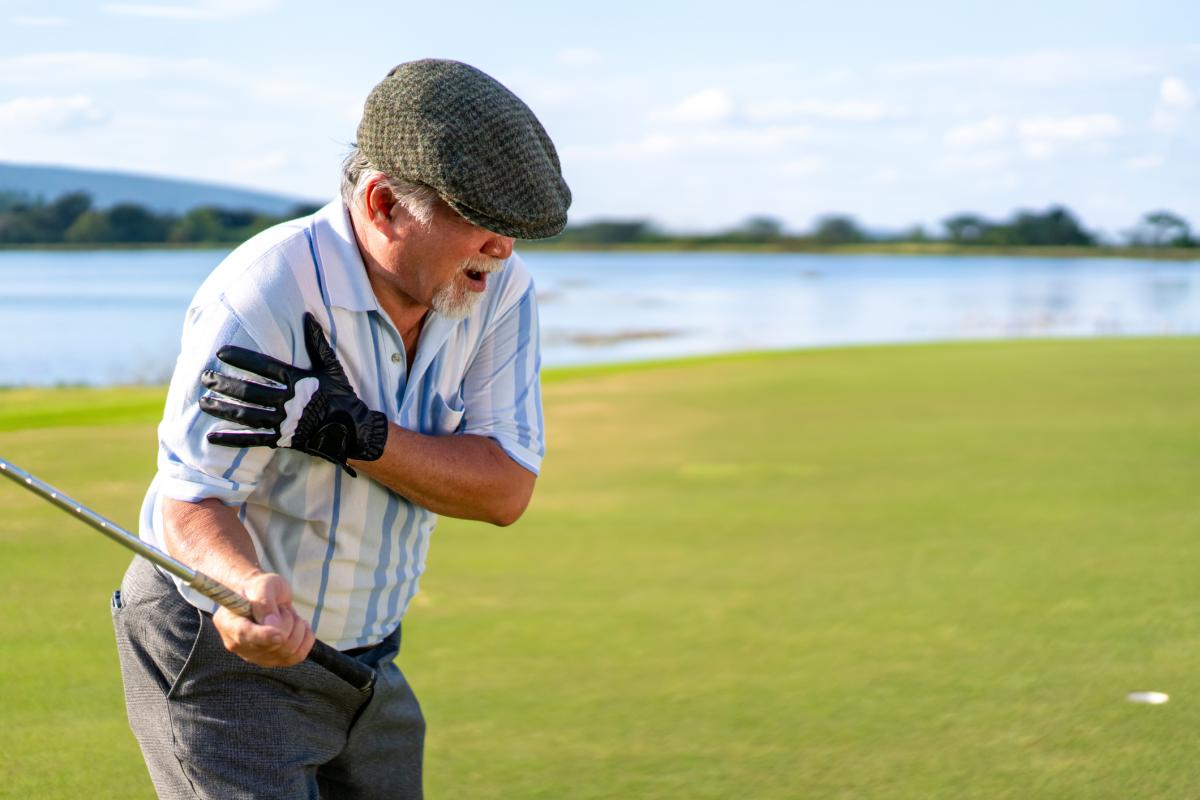Common golf injuries and prevention

When it comes to injuries, golf is generally perceived as a low-risk sport. Chances are you love the game and would like to stay playing your whole life. Most often, golfers may experience nagging aches and pains over the risk of a major injury. If you are an avid player, make sure you stay on the links with awareness and prevention of the most common golf injuries.
Common Golf Injuries
According to the American Orthopaedic Society for Sports Medicine, 44 percent of youth golf injuries occur from overuse. Main causes were reported as resulting from a lack of flexibility, poor conditioning, excessive play or practice, poor swing mechanics, ground impact forces and intermittent play.
The most common golf injuries involve the lower back, rotator cuff and elbow or wrist. Lack of proper technique, lack of flexibility and core muscle weakness can be primary causes of lower back golf-related injury. Overuse is a primary cause of shoulder rotator cuff injury and elbow/wrist pain known as tendinitis.

Golf Injury Prevention
You don’t have to be strong to play golf; the key is timing and flexibility. Not only will improving flexibility improve your game, it will also help prevent injury.
Warm up
The repetitive nature of golf requires maintaining a healthy range of motion. Always warm up with stretching exercises, particularly focusing on the hamstrings, lower back, shoulders and core. For the younger player, warming up and stretching before a round is just as important as it is for the older player. For the older adult, double your time for warming up and stretching.
Strength training
Strength training is generally good for overall health and injury prevention, allowing the muscles to function more efficiently. Plank exercises will strengthen your core to help prevent lower back injuries. To prevent rotator cuff injury, practice correct form and build in regular strength training.
Use proper golf technique
To prevent tendinitis, be sure you are using proper swing techniques when you practice. Typically caused by tendon overuse, tendinitis of the wrist or elbow can be avoided by rotating your practice regimen to allow these areas to get adequate rest. Once you have tendinitis, the goal is to reduce inflammation, strengthen muscles and tendons, and correct technique to prevent a re-occurring injury.
If You Suspect an Injury
Once you start feeling a nagging ache or pain, it’s time to pay attention to it with simple home remedies: rest, ice and/or heat, and non-steroidal anti-inflammatory medications.
If the pain continues beyond one or two weeks of home treatment or if you experience new onset weakness or numbness in an extremity, it’s time to call a doctor. You can expect a doctor to take a detailed history of your symptoms and previous treatment, perform a focused physical examination of the body part injured, and possibly perform imaging studies such as X-rays.
If you have experienced a past injury or orthopedic surgery, you can still enjoy golf. A previous injury or surgery should not prevent you from playing the game you love.
Golf is a sport that can be enjoyed by individuals of all ages and athletic ability, so don’t let previous injuries stand in the way of your enjoyment of the game. Appropriate warm up and stretching is the key to staying on the course and enjoying this wonderful game!




